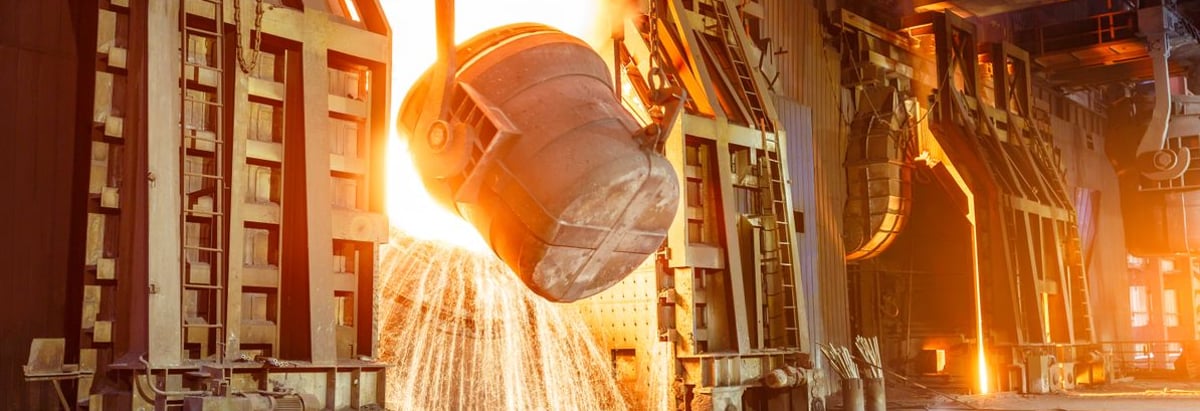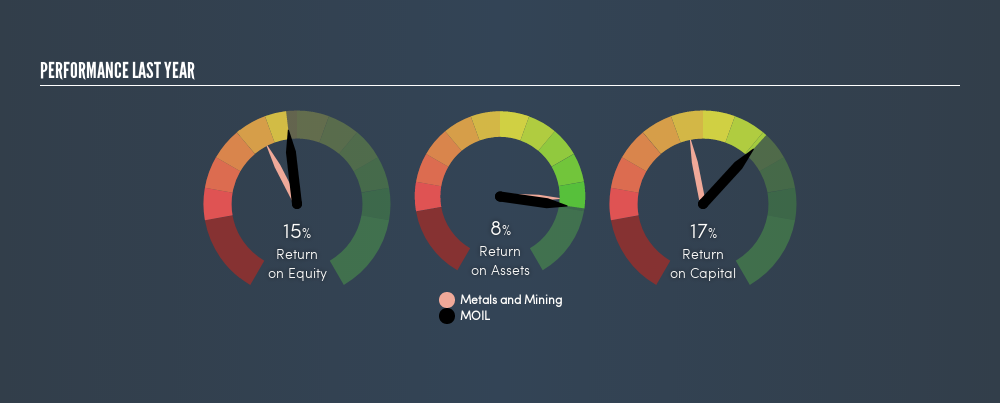
Today we'll evaluate MOIL Limited (NSE:MOIL) to determine whether it could have potential as an investment idea. To be precise, we'll consider its Return On Capital Employed (ROCE), as that will inform our view of the quality of the business.
First, we'll go over how we calculate ROCE. Then we'll compare its ROCE to similar companies. Finally, we'll look at how its current liabilities affect its ROCE.
Return On Capital Employed (ROCE): What is it?
ROCE is a metric for evaluating how much pre-tax income (in percentage terms) a company earns on the capital invested in its business. All else being equal, a better business will have a higher ROCE. In brief, it is a useful tool, but it is not without drawbacks. Author Edwin Whiting says to be careful when comparing the ROCE of different businesses, since 'No two businesses are exactly alike.'
So, How Do We Calculate ROCE?
The formula for calculating the return on capital employed is:
Return on Capital Employed = Earnings Before Interest and Tax (EBIT) ÷ (Total Assets - Current Liabilities)
Or for MOIL:
0.17 = ₹4.8b ÷ (₹32b - ₹4.2b) (Based on the trailing twelve months to March 2018.)
So, MOIL has an ROCE of 17%.
Want to participate in a short research study? Help shape the future of investing tools and you could win a $250 gift card!
See our latest analysis for MOIL
Is MOIL's ROCE Good?
When making comparisons between similar businesses, investors may find ROCE useful. It appears that MOIL's ROCE is fairly close to the Metals and Mining industry average of 16%. Regardless of where MOIL sits next to its industry, its ROCE in absolute terms appears satisfactory, and this company could be worth a closer look.
Our data shows that MOIL currently has an ROCE of 17%, compared to its ROCE of 11% 3 years ago. This makes us wonder if the company is improving.

It is important to remember that ROCE shows past performance, and is not necessarily predictive. ROCE can be misleading for companies in cyclical industries, with returns looking impressive during the boom times, but very weak during the busts. This is because ROCE only looks at one year, instead of considering returns across a whole cycle. We note MOIL could be considered a cyclical business. Future performance is what matters, and you can see analyst predictions in our free report on analyst forecasts for the company.
What Are Current Liabilities, And How Do They Affect MOIL's ROCE?
Current liabilities are short term bills and invoices that need to be paid in 12 months or less. The ROCE equation subtracts current liabilities from capital employed, so a company with a lot of current liabilities appears to have less capital employed, and a higher ROCE than otherwise. To counteract this, we check if a company has high current liabilities, relative to its total assets.
MOIL has total liabilities of ₹4.2b and total assets of ₹32b. As a result, its current liabilities are equal to approximately 13% of its total assets. A fairly low level of current liabilities is not influencing the ROCE too much.
Our Take On MOIL's ROCE
This is good to see, and with a sound ROCE, MOIL could be worth a closer look. There might be better investments than MOIL out there, but you will have to work hard to find them . These promising businesses with rapidly growing earnings might be right up your alley.
I will like MOIL better if I see some big insider buys. While we wait, check out this free list of growing companies with considerable, recent, insider buying.
We aim to bring you long-term focused research analysis driven by fundamental data. Note that our analysis may not factor in the latest price-sensitive company announcements or qualitative material.
If you spot an error that warrants correction, please contact the editor at editorial-team@simplywallst.com. This article by Simply Wall St is general in nature. It does not constitute a recommendation to buy or sell any stock, and does not take account of your objectives, or your financial situation. Simply Wall St has no position in the stocks mentioned. Thank you for reading.
About NSEI:MOIL
MOIL
Engages in the exploration, development, and marketing of various grades of manganese ores in India.
Flawless balance sheet, undervalued and pays a dividend.
Market Insights
Community Narratives



